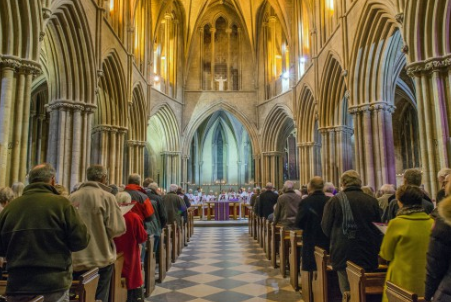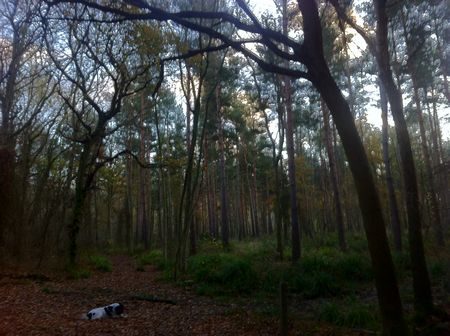About Pershore
Pershore is a rural market town in the heart of Worcestershire and one of the county's secret gems. From its impressive Abbey to its independent shopping and dining scene, Pershore is full of delights and is ideally located for easy access to Shakespeare Country, the Cotswolds, the Black Country, and the Malverns.
History of Pershore
It is difficult to know when the area that is now Pershore was first settled. The area around Pershore, Worcester and Evesham was home to the Hwicce, a Saxon tribe whose name survives in local placenames (i.e. the District of Wychavon). The nearby woodland, Tiddesley Wood, is said to date from the last Ice Age. The town is built within a river valley, with several natural springs feeding into the river. The land is fertile, but sandy if you dig down deep to what was probably the old river bed. This indicates that the area surrounding the river was built up and drained, probably by the former monastery.
Pershore Abbey was founded by King Aethelred of Mercia sometime in the late seventh century, probably around 689AD. Further privileges were granted under the patronage of later Mercian kings. The Abbey and monastery were refounded under Benedictine reform by a charter granted by King Edgar in 972AD, likely at the request of the Bishop of Worcester. The Abbey was then destroyed in a great fire, before being refounded a second time under the patronage of a local nobleman, Odda of Deerhurst. Under Edward the Confessor, some of Pershore Abbey's lands were stripped from it and handed over to Westminster Abbey, sparking a dispute that continued for centuries and would later lead to the establishment of the separate St Andrew's Church for residents of the Westminster lands.
The current structure of the Abbey is Norman, and the original Norman baptismal font remains. Construction began around the year 1100. The monastery was dissolved by Thomas Cromwell in 1539, his case was assisted by testimony from one of the monks about the boorish and drunken behaviour of his fellow brothers. Parts of the Abbey and monastery buildings from this time were used by locals in housebuilding and can be seen if you look carefully. The Abbey subsequently became a parish church, with patched-up repairs as parts of the original Abbey slowly collapsed. The present nave occupies what would have been part of the choir, illustrating just how much the building has reduced in size. Restoration work began in the Victorian period to improve and open up previously hidden areas of the interior. Anglican monks briefly returned to the town in the twentieth century.



The town around the Abbey was a fairly traditional market town, benefiting from the navigable River Avon - upon which the town is built - and road traffic from its position on what was once the main road from Worcester to London. The Angel Hotel (or Inn, as it was) was likely built to benefit from this passing trade. This fact probably also accounts for the huge number of inns in the town until the latter half of the twentieth century. Much of the local employment would have been agricultural, although the Abbey was also an exporter of wool. Its fortunes rose and fell in the Middle Ages. The town benefited from its market, situated in the current Broad Street (just outside The Angel) but also a fair. By local custom, any house that put a bush outside could sell ale without a license during fair-time, although this custom was later suppressed during the nineteenth century. A great fire in the early fourteenth century, followed by the onset of the Black Death not too long after, appears to have had a particularly devastating impact, with much of the town in poverty by the early fifteenth century. Legal disputes and a complex legal administration between the lands of the two Abbeys also hindered growth.
A plasterboard painting found in the hotel hints that Queen Elizabeth I passed through the town on one of her itineraries. This was not atypical. The town was visited by four successive medieval monarchs: King John, Henry III, Edward I, Edward II and Edward III. Queen Victoria visited the town too, staying at the old Three Tuns Hotel, which is now a wine bar and cafe. The Old Pershore Bridge was destroyed in 1644 during the English Civil War by the Royalist army to slow a Parliamentarian pursuit. The bridge was destroyed too quickly, however, and 44 Royalists perished as a result. It is still possible to tell which parts of the bridge have been rebuilt at separate times through close inspection.
Much of the current frontages in the town centre date from the Georgian period, which has led to it being marked as an outstanding conservation area. A vociferous opponent of the US Constitution, George Mason, was descended from a Parliamentarian Pershore family and is acclaimed as one of the authors of the US Bill of Rights. Glove-making and tannery became more important during the eighteenth century. During the Victorian era, there were factories for farm machinery, watch springs and wool stapling, but growing and market gardening remained the chief local industries. The town also received its railway station during this time. The town also had at least two racecourses. The nearby Defford Airfield meant that the town saw some military pass-through during the Second World War. A Canadian warplane plane crashed into Bridge Street during a routine fly-over. The town paid tribute to the Canadian airmen in the town by naming several streets after Canadian pilots.
The town has changed since the Second World War. New housing estates were built on former Abbey lands, up the Holloway, and out towards the railway station. The surviving racecourse was transformed into an industrial estate. The town's borders continue to expand. The town has remained fortunate in retaining many independent shops, restaurants and pubs, resisting out-of-town developments, and maintaining a strong civic life.
Local Highlights
Pershore Abbey
The Norman-built Pershore Abbey is well worth a visit. Once an Anglo-Saxon church before becoming a wealthy monastery, the remnants of the Abbey are still impressive to this day. The stained glass windows and wall artwork date to the Victorian restoration of the building, but there are medieval effigies and a Norman font to view. The tower can be scaled on selected days for a stunning view of the surrounding valley. The Abbey is still at the fulcrum of most town events. The Abbey is just a quick two-minute walk from The Angel.


Tiddesley Wood
The wood, also known as the Harry Green Reserve after a local World War One veteran, is a semi-natural ancient woodland, once managed by the local monks. It became a commercial operation before being purchased and restored by the Worcestershire Wildlife Trust. It is home to an abundance of wildlife and wildflowers, including a spectacular bluebell bloom in the Spring. The plum and apple orchards are remnants of the old market gardening industry. The wood is now a beautiful, peaceful place to walk your dog, birdwatch, or just go for a stroll.
Pershore Wetlands
Pershore Wetlands is a recent community project to establish a wildlife haven in the town and to help alleviate local flooding. 50,000 reeds were planted to help create a thriving network of ponds and pools on existing floodplains, connected by boardwalks. Today, the Wetlands are home to a wealth of wildlife, particularly waterfowl.

